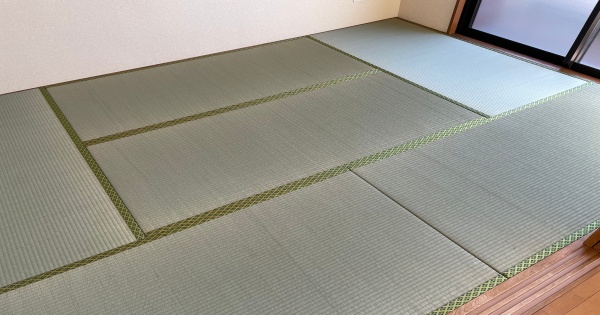
When asked, "What is tatami?" how would you answer?
Most people might picture a woven rush mat attached to a base made of straw, tailored to fit the dimensions of a Japanese room. This is likely the general image most have.
Of course, this is not wrong. Even I associate Japanese rooms with tatami.
However, when researching the origin of the word "tatami," it turns out that the association of tatami with Japanese rooms began during the Azuchi-Momoyama period, which is relatively recent in the long history of tatami.
So, what was tatami before that?
Tatami: Foldable Bedding?

The oldest known tatami in Japan is said to be the "Goshō no Tatami," a mat used by Emperor Shōmu and currently housed in the Shōsō-in in Nara Prefecture. This tatami was made by weaving rushes and stacking five to six layers, with a woven rush surface and brocade edges sewn together.
This is considered the prototype of tatami.
However, the Goshō no Tatami was not used to cover entire rooms as it is today. Instead, it was used as a sleeping mat, much like a modern-day bed.
But why was it called "tatami"?
The key lies in the fact that the original tatami could be folded and stored when not in use. The word "tatami" itself comes from the concept of folding and storing, which is how it got its name.
Thus, tatami originally referred to foldable bedding, similar to modern foldable beds or mattresses.
When looking at the long history of tatami, it becomes clear that tatami was not originally associated with Japanese rooms, but rather with bedding.
Creating New Tatami from the Origins of Tatami
At Higuchi Tatami Shop, we craft new tatami every day inspired by the original meaning of the word "tatami."
Soft and warm like bedding, yet durable and resistant to sagging.
Our goal is to create tatami that you can lie on for a nap during the day or place a futon on at night for a restful sleep.
Thin tatami can be used like a mattress, while thick tatami can serve as a tatami bed.
By exploring the origin of tatami, we gain valuable insights into how tatami should be in the future and how to make it appealing to people around the world.
If you are a creator of any kind, I encourage you to research the origin of what you make. You might find some great ideas.
Thank you for reading.



















